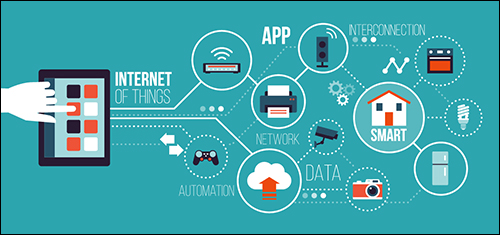These days, we have become more and more aware of how greatly the Internet of Things (IoT) affects our lives. In recent years, this phenomenon has become so popular that no one scratches his or her head trying to figure out what the IoT is and where it is applied. The scope of application truly impresses: cars, houses, shops and hotels are already equipped with a number of smart IoT devices that are designed to simplify our lives as much as possible. And with the increased popularity and globally recognized reliability, a lot of new devices are expected to join this list.
As one of the main trends of the past few years, the Internet of Things is not yet going to surrender, and will conquer even more space in the IT sphere in the coming years. The number of connected devices has multiplied, driven by a lot of new business models and applications and the lower costs of IoT devices. In 2015, there were 10 billion devices connected to the internet, while in 2017, this figure outnumbered the world’s population, having reached 8,4 billion. Let’s take a look at which future the Internet of Things market analysis shows.

Are We to Witness the Connected Future?
The Internet of Things has firmly entered our reality, and it is hard to realize its effect to a full extent. Imagine billions of smart units built to solve complex issues within any sphere, be it logistics, manufacturing, health care or simply wearables that we got used to always having on hand. Forecasts predict that this year, mobile phones will definitely be surpassed in quantity by IoT devices. The numbers are staggering. More than 22 billion IoT devices have been forecast to connect by 2022, with nearly $6 trillion spent on the IoT, exceeding the number of all personal computers, smartphones and tablets put together.
Nowadays, there are hundreds of organizations that keep investing in IoT software-development services, and they are gradually realizing the technology at the most famous companies. A worldwide-known British drinks company, Diageo, joined the Internet of Things to provide its bottles with sensors that are ready to interact with smartphones. The sensors protect the brand from counterfeiting, supporting the product’s reliability and quality.
Another vivid example of the IoT’s introduction is Rolls-Royce, a company renowned for its intelligent engines. The collaboration with Microsoft resulted in the integration of Azure IoT Suite to support jet engine sensors and receive reports on their condition.
What Future Will Businesses Face With the IoT?
Almost any industry already takes advantage of using the IoT, adding intelligent devices to places, products and even people. Smart sensors not only help to achieve improved workflow transparency and effectiveness of all the processes via continuous data collecting and reporting, but also allow future consumers to take informed decisions and benefit from the IoT’s intellect and reliability.
The IoT forecasts predict that in several years, the majority of large and medium-sized companies from around the world will be ready to boost their investments in the sensors increasing the number of devices tenfold. The average number of businesses that introduce the Internet of Things into their processes is more likely to double, compared to the current 25 percent. The main industries that invest in the IoT will keep their places, with energy, mining, power and automotive at the top of the list. Such industries as health care, entertainment and finance have enhanced their use of the IoT, making more and more progress.

There are already quite a number of risks associated with the Internet of Things. Some of them derive from the enormous number of devices and sensors and the possible problems associated with interoperability and safety. Other issues are new and may be connected to the nature of these devices, their purpose, what are they used for and how they are managed. To take root in business and our everyday lives, the IoT should deliver all of its benefits with an adequate level of trustworthiness.
All the figures, facts and forecasts illustrate that the IoT is here to stay. This smart environment that we were promised in science-fiction stories doesn’t seem that weird anymore. We are facing the brand-new era of the Internet of Things, and we should be ready to hand over the responsibilities for numerous aspects of our lives to the intelligent things, learn how to trust them and head toward the future, where everything is connected and always available.
Darya Danikovich is a technology journalist and marketing specialist at EffectiveSoft, a custom software-development company. Darya interviews software-development engineers and designers to share their technical expertise across a wide range of topics, including the IoT, health care, education, e-commerce software development and design, and more.

